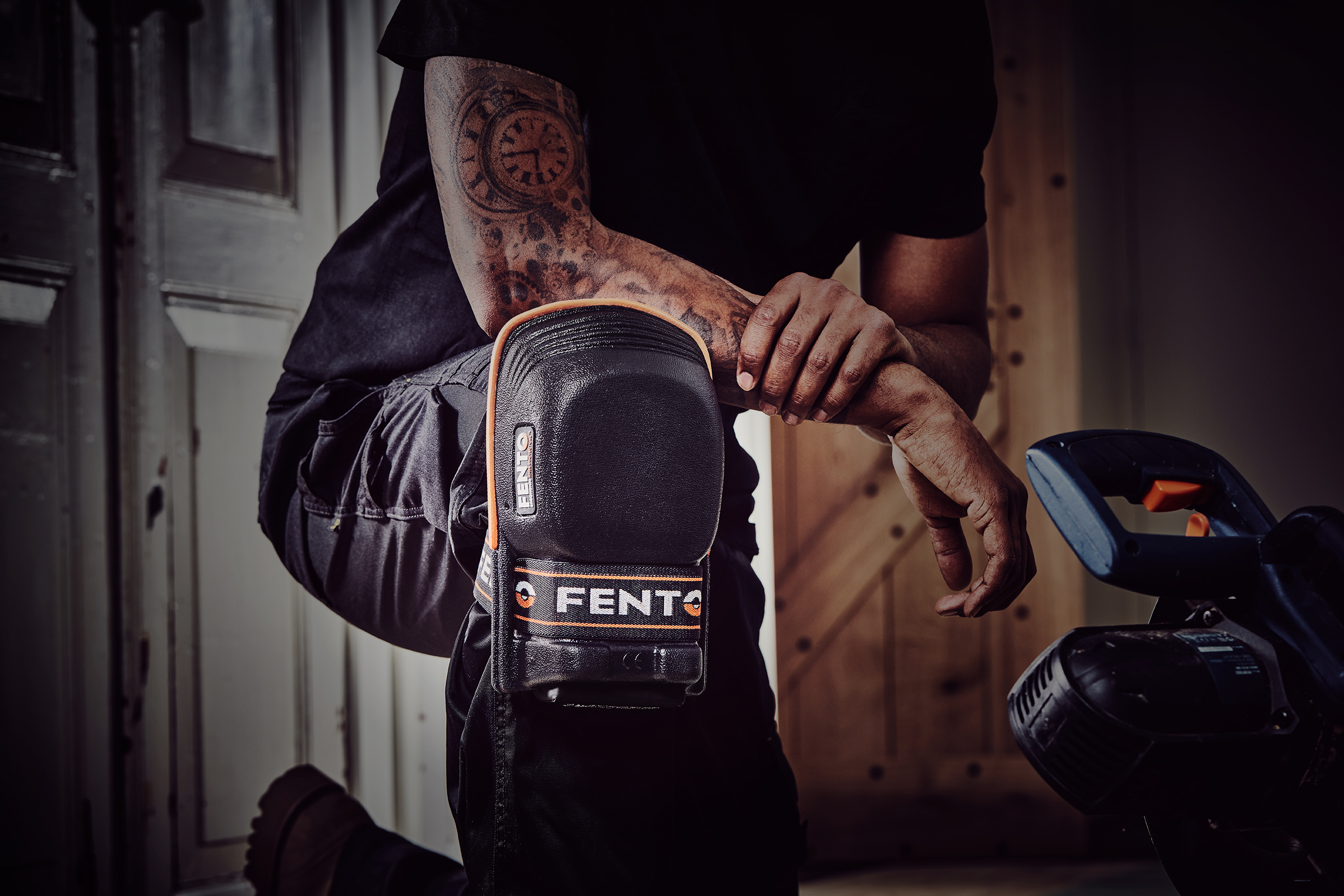The EN 14404:2010 standard ensures that knee pads provide adequate protection against penetration, impact, and ergonomic issues, enhancing safety and comfort for workers.
Types of Knee Protectors
The standard categorizes knee protection into four types based on design and usage:
- Type 1: Standalone protectors strapped to the leg, like the FENTO ORIGINAL, MAX and HOME.
- Type 2: Pads integrated into or attached to trousers, like the FENTO POCKET and POCKET M2.
- Type 3: Loose protectors placed on the ground, like the FENTO BOARD and BOARD M2.
- Type 4: Integrated into systems with additional functionality, such as standing aids or kneeling frames.
Performance Levels
Knee protectors are evaluated for penetration resistance using a test spike, and their performance is classified into three levels:
- Level 0: No penetration resistance; suitable for flat, smooth surfaces only.
- Level 1: Withstands penetration forces of at least 100 ± 5 N, suitable for uneven surfaces with a low risk of sharp objects.
- Level 2: Withstands penetration forces of at least 250 ± 10 N, designed for severe environments with a high risk of sharp objects like stones and nails.
The internal surface must not deflect more than 5 mm during penetration resistance testing.
Additional Testing
EN 14404:2010 outlines several tests to evaluate the performance of knee protectors:
- Impact Testing: Ensures protection against forceful strikes using a 5 J impact.
- Force Distribution: Verifies even pressure distribution, reducing stress on the knees.
- Restraint Testing: Evaluates the stability of knee pads during movement, ensuring they stay in place.
- Ergonomic Testing: Includes wearer trials to assess comfort, fit, and ease of movement.
Why Certification Matters
Knee protectors conforming to EN 14404:2010 undergo rigorous testing to ensure safety, durability, and ergonomics. By selecting certified products, workers can help minimize the risk of injuries and long-term knee damage, even in challenging environments.
